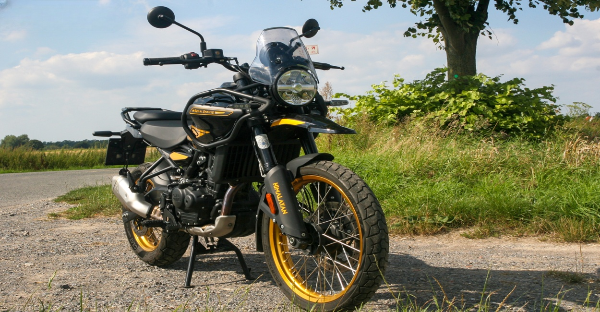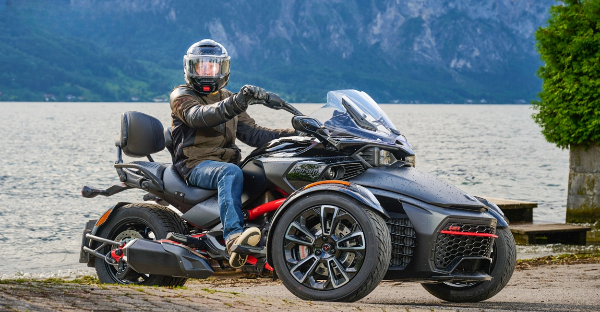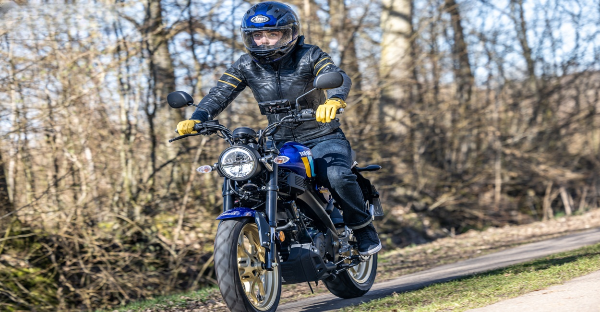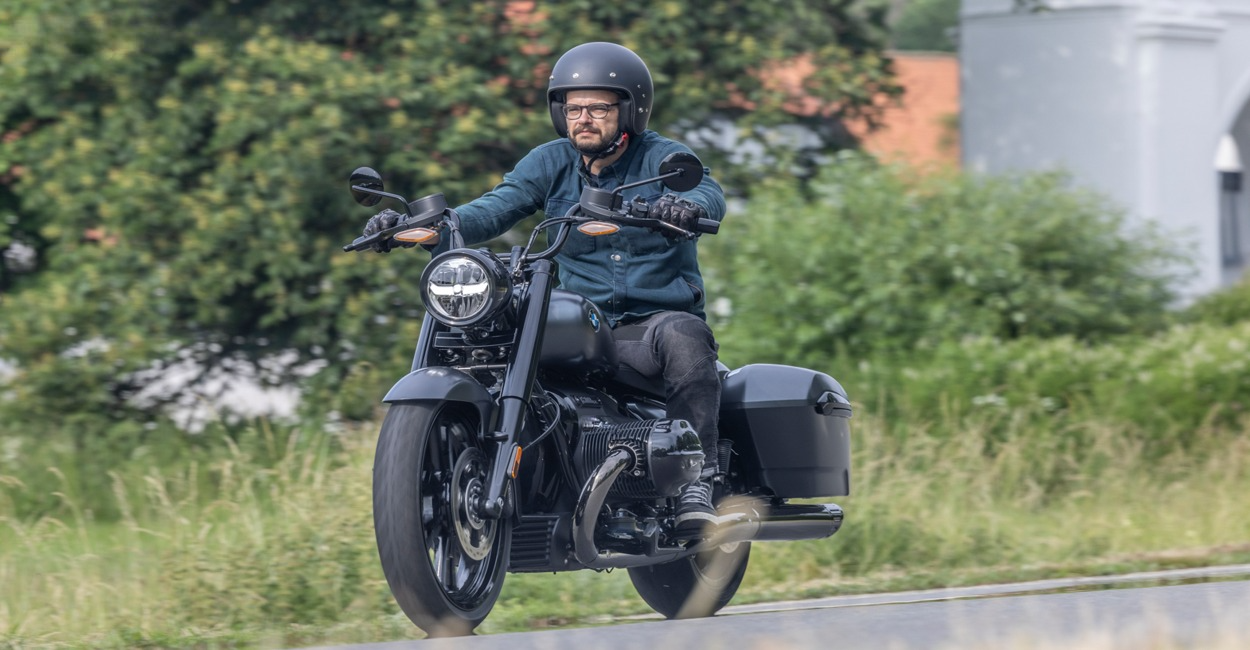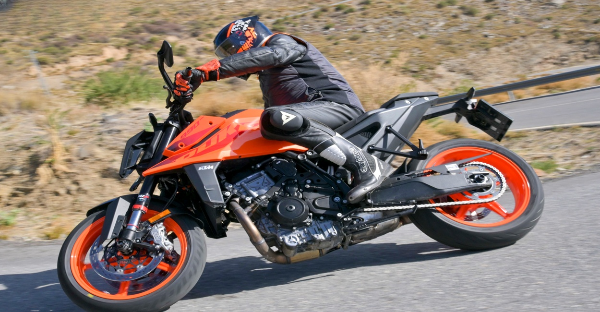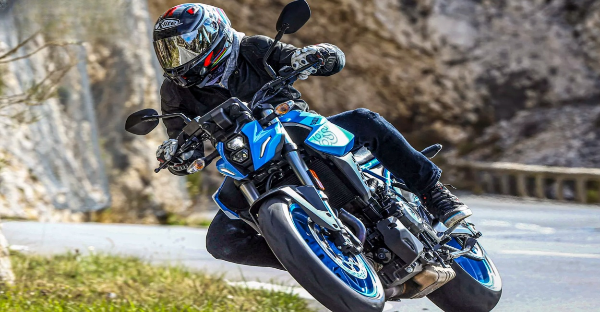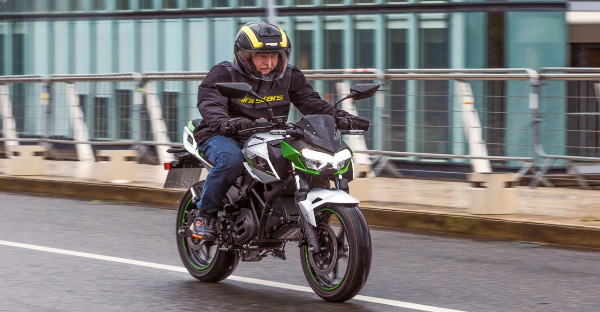There’s something wildly poetic about taking a motorcycle named “Himalayan” to the very terrains it was born to conquer. But rather than the Himalayas this time, I pointed the compass west towards the monsoon-draped cliffs of Malshej Ghat. This winding ribbon of tarmac, draped in mist and framed by roaring waterfalls, offered the perfect proving ground for the all-new Royal Enfield Himalayan 450,a motorcycle reborn with the kind of intention that made me want to keep riding till the last raindrop.
Royal Enfield’s latest adventurer isn’t just an update. It’s a fresh philosophy, shaped by water cooling, modern electronics, and lessons learned from its predecessor, the 410. With a new heart named the Sherpa and bones shaped for the extremes, the Himalayan 450 doesn’t just want to travel; it wants to explore. And I was happy to oblige.
Slimmer and More Dynamic
The first thing you notice about the Himalayan 450 is how it has shed the bulk of its predecessor without losing its purpose-built poise. It’s leaner, but not fragile, think mountain goat, not housecat. Royal Enfield has trimmed the visual fat without compromising the rugged aesthetic that makes this bike so desirable to wanderers.
That signature “duckbill” above the front fender remains, as does the crash guard-integrated tank protection. But now it all flows together with more finesse. On the road through Malshej’s sharp hairpins and patchy offshoots, this dynamic silhouette didn’t just look the part, it rode like it too. The revised ergonomics place the rider in a commanding but comfortable stance, making it easier to flick the bike through corners or stand up while tackling a slushy trail.
Practical Solutions
Enfield didn’t just stop at design; they sprinkled in utility like they’ve been reading overlanders’ journals for years. I counted six sturdy eyelets on each side of the new frame, perfect for mounting soft luggage or strapping down essentials for a week-long journey. The rear luggage rack is not just an afterthought but part of the chassis design. And yes, there’s a center stand, because the real world isn’t all dealership floors and weekend coffee rides.
Then there’s the toolkit, tucked away but always accessible. These are the kind of details that sound small until you’re fixing a puncture in the rain with no cellphone reception.
TFT, Driving Modes, Navigation and More
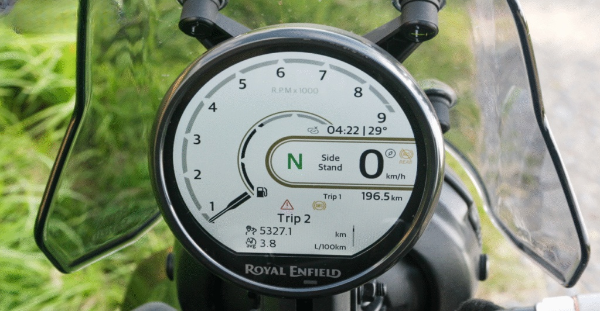
Swing a leg over, and the world lights up in pixels. The circular TFT screen is a revelation. Clean, crisp, and functional, it offers everything from battery voltage and engine temperature to outside climate and even full-map navigation via Google Maps, courtesy of the Royal Enfield app. The screen lets you toggle between analog and digital visuals, which is a small but appreciated nod to rider preference.
There are two riding modes, Performance and Eco, and a dedicated ABS-off option for the rear. Switching between modes isn’t seamless though; the ignition must be cycled, which feels like a small hitch in an otherwise tech-forward leap. The USB-C port was a blessing as I charged my phone mid-ride, soaking in Malshej’s moody skies with tunes and directions humming through my headset.
Comfortable Seat, Adequate Wind Protection
After four hours of continuous riding through misty mountain bends and a steady drizzle, my backside had no complaints. The seat is a plush affair, with horizontal movement that allows you to stretch out when fatigue sets in. The pillion seat is more generous than before and doesn’t force your companion to pray at every pothole.
Despite its minimal design, the windscreen punches above its weight. It redirected airflow away from my chest, reducing fatigue on long highway stints and the climb into thin mountain air.
Smooth Running and Strong Character
At the heart of the Himalayan 450 beats the new 452 cc Sherpa engine, a single-cylinder, liquid-cooled unit that finally gives the Himalayan the horsepower it longed for. With 40 hp at 8,000 rpm and 40 Nm at 5,500 rpm, it pulls confidently without ever feeling stressed.
At around 3,100 rpm, the classic single-cylinder shudder smooths out, and the Sherpa hums a deep, satisfying tune. In “Eco” mode, the bike stretches out its gears, ideal for laid-back cruising. But twist the throttle in “Performance” mode, and it comes alive, comfortably revving to 6,000 before it starts to taper.
The six-speed gearbox is silk, especially in contrast to the engine’s gruff charm. Neutral slots in like a charm, and the clutch lever is so light it feels like a trick. Even in mountain traffic or low-speed trail work, the clutch didn’t protest once.
Off-Road Capability
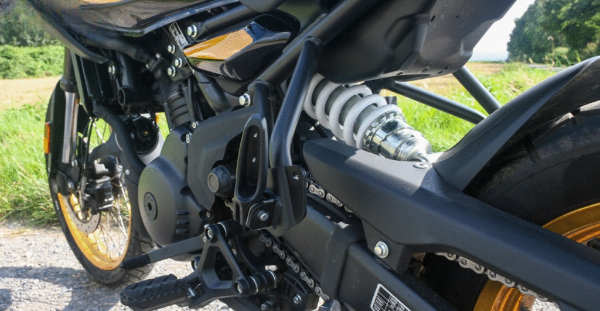
This is where the Himalayan earns its badge. With 200 mm of suspension travel at both ends, Showa components, and a 21-inch front wheel, the bike made light work of everything Malshej threw at it, loose gravel, mud slicks, and even a few small water crossings.
Its 23 cm of ground clearance and wide steering angle made tight turns feel effortless. The front brake has a soft initial bite, ideal for loose terrain, while the rear brake is precise, responsive, and easy to modulate even on slippery declines.
I’ll admit, the side stand’s lean angle feels daring the first few times. But once you trust it, the whole package comes together.
Agile Curve Robber
If you thought a 21-inch front wheel kills fun in the corners, think again. The Himalayan 450 surprised me with how quickly it dropped into a lean. Through Malshej’s wet switchbacks, I found a rhythm, lean, throttle, upright, repeat, and the Himalayan danced to my tune.
It doesn’t feel light, but it feels balanced. The steel double-cradle frame keeps it grounded, and despite weighing in at 181 kg dry, it never felt clumsy. Fuel economy also impressed, averaging around 3.7 liters per 100 km during our test, even with some throttle-happy bursts. Push harder and you might see 4.5, but that’s still impressive for a bike this capable.
Technical Specifications
| Feature | Specification |
| Engine | 452 cc, single-cylinder, liquid-cooled, 4-valve |
| Bore x Stroke | 84 x 81.5 mm |
| Compression Ratio | 11.5:1 |
| Power Output | 40 hp @ 8,000 rpm |
| Torque | 40 Nm @ 5,500 rpm |
| Transmission | 6-speed with wet multi-disc clutch |
| Top Speed | 151 km/h |
| Suspension (Front/Rear) | 43 mm USD fork / Monoshock, 200 mm travel |
| Brakes (F/R) | 320 mm disc / 270 mm disc |
| Wheels | Spoked; 21″ front, 17″ rear |
| Tyres | 90/90-21 (F) / 140/80 R17 (R) |
| Frame | Steel double cradle |
| Ground Clearance | 230 mm |
| Seat Height | 825–845 mm |
| Fuel Tank Capacity | 17 liters |
| Weight (Dry) | 181 kg |
| Electronics | ABS, Riding Modes, TFT Display, Navigation |
| Fuel Consumption | 3–4.5 L/100 km |
| Price (Germany) | €6,440 (incl. costs) |
Conclusion
The Royal Enfield Himalayan 450 is no longer just a charming underdog, it’s a serious contender in the midweight adventure segment. It brings personality, practicality, and punch into a single package that doesn’t break the bank or your back.
For the first time, the Himalayan doesn’t feel like it’s asking for excuses. It feels like a partner ready for the long haul, whether you’re crossing state borders or just climbing your favorite weekend ghat.
On the soaked, emerald roads of Malshej, I found a bike that was equally happy cruising at 80 km/h through a foggy forest as it was clawing up a washed-out trail. If wanderlust is your drug, the Himalayan 450 just might be your new dealer.
Is the Himalayan 450 equipped with traction control?
No, it does not have traction control as of now. However, the ride-by-wire throttle and well-mapped engine help deliver power smoothly, even on slippery surfaces.
Is the Himalayan 450 suitable for international overlanding?
Yes. With its global-ready engine, rugged frame, and long-travel suspension, it is a solid choice for overlanding. It’s already gaining popularity in export markets like the UK, Europe, and Australia.
Does the Himalayan 450 have cruise control?
No, it does not feature cruise control. However, the consistent throttle response and gearing make sustained highway speeds easy to maintain.
